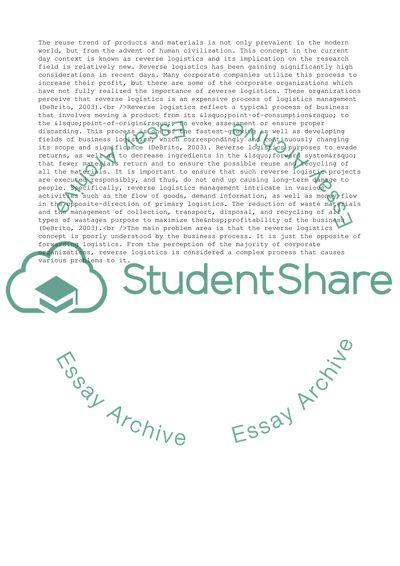Cite this document
(Impact of Reverse Logistics on the Future of Transportation and Logistics Management Case Study Example | Topics and Well Written Essays - 5000 words, n.d.)
Impact of Reverse Logistics on the Future of Transportation and Logistics Management Case Study Example | Topics and Well Written Essays - 5000 words. https://studentshare.org/management/1879202-reverse-logistics-and-its-impact-on-the-future-of-transportation-and-logistics-management
Impact of Reverse Logistics on the Future of Transportation and Logistics Management Case Study Example | Topics and Well Written Essays - 5000 words. https://studentshare.org/management/1879202-reverse-logistics-and-its-impact-on-the-future-of-transportation-and-logistics-management
(Impact of Reverse Logistics on the Future of Transportation and Logistics Management Case Study Example | Topics and Well Written Essays - 5000 Words)
Impact of Reverse Logistics on the Future of Transportation and Logistics Management Case Study Example | Topics and Well Written Essays - 5000 Words. https://studentshare.org/management/1879202-reverse-logistics-and-its-impact-on-the-future-of-transportation-and-logistics-management.
Impact of Reverse Logistics on the Future of Transportation and Logistics Management Case Study Example | Topics and Well Written Essays - 5000 Words. https://studentshare.org/management/1879202-reverse-logistics-and-its-impact-on-the-future-of-transportation-and-logistics-management.
“Impact of Reverse Logistics on the Future of Transportation and Logistics Management Case Study Example | Topics and Well Written Essays - 5000 Words”. https://studentshare.org/management/1879202-reverse-logistics-and-its-impact-on-the-future-of-transportation-and-logistics-management.


